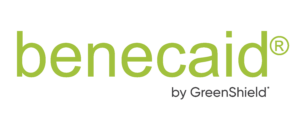During renewal meetings, Advisors are often tasked with creative ways to cut benefits costs or to mitigate potential renewal price increases. The worst thing a client can do is to make changes without first looking deeper into their plan.
Lack of awareness is one of the primary factors driving client dissatisfaction with benefit plan costs. We’ve highlighted a few key reports that will help quickly identify trends to shift your clients’ perspective and add significant value to your renewal meetings.
Key Report: Top DIN Report
What is it?
Every prescription and over-the-counter drug is assigned a Drug Identification Number (DIN). This is an 8-digit number located on the label of all products that have been evaluated by the Therapeutic Products Directorate (TPD) and approved for sale in Canada. The Top DIN report will break down a client’s prescription drug claims by the specific drug. These reports maintain the confidentiality of the plan members while helping to identify some important trends.
What are you looking for?
Comparing the current Top DIN Report to the previous reporting period will highlight any new drugs which may have contributed to an overall increase in prescription drug claims.
Here are some trends to look for:
- Identify whether the top drugs are used for long or short-term treatments. Plan Members undergoing long-term treatments may be eligible for financial support through provincial drug programs. These programs can relieve the financial pressure of paying for prescription drugs not covered by the plan.
Recommendation: If you have a client that could benefit from a provincial program, reach out to your Benecaid Executive Benefits Consultant. Our Customer Care team is trained on many of the provincial programs available. We can confidentially support groups with members who may be eligible for such programs by facilitating enrolment and providing further information into these provincial plans.
- Take a look at the type of drug claims submitted. With heightened awareness of mental health disease there has been an increase in anti-depressant medications in the market. These medications can be extremely effective when used alongside additional therapeutic support.
Recommendation: Employee & Family Assistance Programs (EFAP) can help employees connect with additional support in their area. If your client already has an EFAP in place, try reaching out to the EFAP provider for tips to increase employee engagement and awareness.
- Note how many of the top DINs are for maintenance medications. These maintenance medications are used to treat long-term illness such as blood pressure, high cholesterol, asthma and a wide variety of other conditions. With medications that are being prescribed on an on-going basis, there are opportunities to save money on costs by lowering dispensing fees and decreasing dispensing frequency. There is also the opportunity to improve adherence which can improve the health outcome of the member.
Recommendation: Suggest a virtual pharmacy program to control dispensing fees and regulate dispensing frequency. Many of these programs also offer convenient home/office delivery options at no extra cost to the plan or the employees. Express Scripts Active Pharmacy is a free pharmacy program that is available to anyone within Canada. Ask your Benecaid Executive Benefits Consultant for more information.
Key Report: Usage Report
What is it?
Usage Reports are usually the most reviewed report. These reports provide more than just the total amount of claims made. They also provide insights and other information.
What are you looking for?
“Claims by category” lets you know which benefits are being most widely by your employees. For example, paramedical expenses might be high but may only be used by a small percentage of claimants. In this case, a change in this coverage type will not have the same impact as a coverage category that is being used by a vast majority of employees.
There may be other areas of coverage that are not being used at all. These can be opportunities for changes in coverage to help offset increasing costs in another area of the plan.
Awareness of claim and usage trends can be helpful when the client is communicating any changes to the plan by providing statistics behind why the changes were made.
Recommendation: Some of our plans have experienced great success by removing paramedical coverage and replacing it with a Health Care Spending Account. This not only allows the employer to contain costs, but also provides the employee with more flexibility in treatment options.
Other key factors:
Changes to demographics
Were there more dependents added or did the average age of your employees increase? These can all have an impact, specifically on pooled benefits rates. Was there a reduction in the size of the workforce? Did some older employees retire?
ASO Reserve Funding
For clients enrolled in an Administrative Services Only (ASO) funding model it is important to review the monthly reserve account balance to ensure that the plan remains on track. Our Account Management team actively reviews these plans and will notify you if there are any potential issues on the horizon
Remember, our Benecaid Account Managers are available to help you with your client renewal meetings and preparation. For more information on how we can help, contact your Benecaid representative or send us an email to advisors@benecaid.com.



Comments are closed.